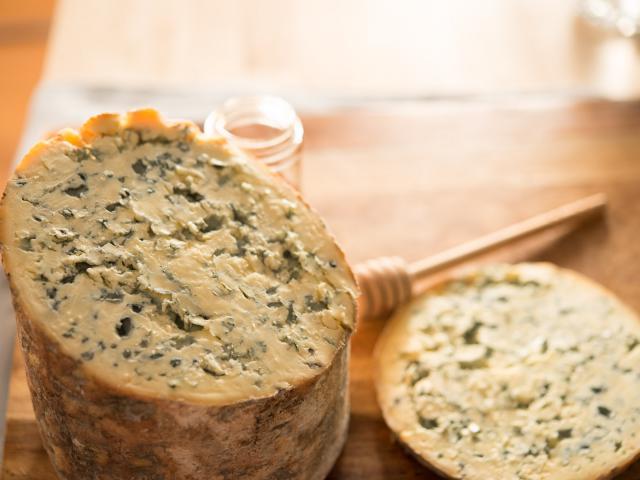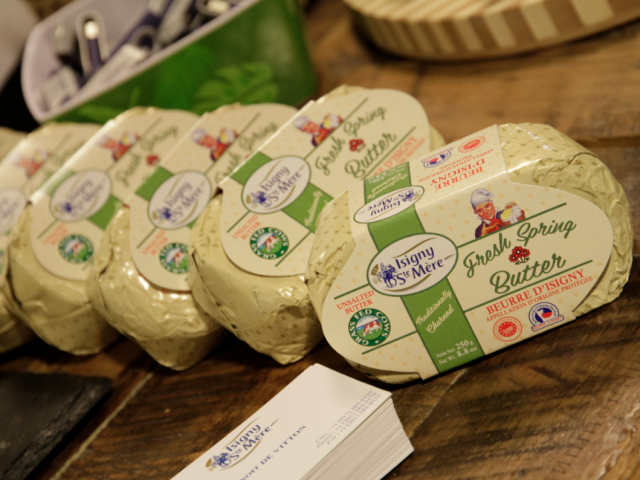A Newbie’s Guide to French Cheese
By Erika Kubick in Food on Oct 22, 2014 9:00PM
When it seems like cheese is slathered over everything these days, it may surprise you to learn that Americans are actually not eating enough cheese. We’re not talking about blocks of cheddar shredded over fried tortilla chips, though we are aware that nachos are a work of God. We’re not talking about curds draped over a pile of fries and gravy, though we still thank you for that, Canada. We’re not talking about a quarter pound chunk of pepper jack melted onto a burger. Take a step back, remove the deep-frying and the carbs from the equation, and allow the spotlight shine on real, honest, good for the body and soul, cheese.
We aren’t suggesting an all-cheese diet here, but fromage can certainly brighten up a healthy diet. When eaten in moderation, artisanal cheese is an excellent source of calcium, protein and more that has played a starring role in the diets of Europeans for centuries. Some Americans are intimidated by these cheeses, which come in a range of shapes and sizes far outside the comfortable realm of orange-dyed blocks of generic cheddar. Funky red rinds and fragrant pastes have a way of intimidating those with limited cheese experience, but we don’t have to continue living like this. Cheese began as a peasant food, a simple and tasty way to preserve nutritious milk. We’re here to help you explore the world of cheese, specifically French cheeses. Let’s break into some curd knowledge and make cheese more approachable and accessible for the average America.
We recently met with representatives from the Cheeses of Europe, sampling an array of French cheeses while learning a little about the terroir and long-standing cheese making traditions. We learned that as cheeses age, their flavor profile runs through a bell curve, with the most lovely characteristics appearing in young cheeses and those that are nearing the end of their life cycle. When it comes to beverage pairings, cheeses will almost always pair with wines from the same region. Also, cheeses should always be served at room temperature, as the cold temperatures dulls their complex flavors. Here's what we think newbie's need to know about French cheese.
1. It's not just about the cheese
No cheese breakdown is complete without a nod to real, European-style butter, which has a higher fat content and is sometimes allowed to culture, or sour. The butter pictured is Isigny Sainte-Mère Butter from an area of Normandy that is exposed to annual flooding. The sea irrigates the pasture imparting a salty, aromatic note to the cow’s cream, which comes through alongside flavors of sweet hazelnuts. Other fantastic butters to look out for include Beurre de Baratte by famed French cheese maker Rodolphe Le Meunier and Cultured Butter from Vermont Butter and Creamery. European-style butters are great for baking, but we love simply smearing a pat or three on a crusty slice of fresh-baked bread.

Photo by Erika Kubick
Cheeses with soft white rinds are known as bloomy rind cheeses and include classics like brie, pictured above, and camembert. Their flavor profiles range from approachable to downright funky. Double and triple cream cheeses, those with a fat content of 60 - 80%, are mild and palatable for picky eaters or children. Those with an affinity for funk can pick out older brie d’meaux, which boasts mushroomy notes and garlic, or Le Châtelain Brie, which is designed to taste like a raw milk brie, with earthy notes and a beefy texture. Camembert, such as Le Pommier, is often quite strong and pungent even when pasteurized. Soft cheeses like these should temper unwrapped at room temperature for at least an hour for maximum enjoyment. These cheeses are lovely alongside tart jams and wines with enough acid to cut through their richness.
3. Washed rinds aren't just for lovers of funky cheese
Washed rinds are often the strongest cheeses, but some are mild enough even if you’re wary of this funky category. The milder French washed rinds include Port Salut and Morbier, pictured above. While the aromatics are pungent, these cheeses are mild, tangy, and easy on the palate. Their soft, meltable texture is ideal for grilled cheeses especially with add-ins like thin apple slices and honey. If you’re ready to take it to the next level, Mont D’or or Epoisse are spreadable washed rind cheeses that have the consistency of frosting with a smoky, bacon-like saltiness. Be sure to allow these to temper unwrapped at room temperature for 1 - 2 hours, depending on their age and texture (harder cheeses come to room temperature more slowly). To temper the bitter funk, balance alongside sweet breads, like raisin toast or gingerbread, or pair with sweet whites and dessert wines.

Photo by Erika Kubick
4. The diversity of blues
French blues are some of the most elegant and delightful of blue cheeses, with flavorful pockets of mold that range from sweet to sour, crunchy to smooth. Roquefort is undeniably the queen of French Blues, but if your palate isn’t accustomed to her boisterous flavor and aroma, you’re better off starting with something a little more delicate. Blue d’Avergne is the cow’s milk version of Roquefort. While it’s made using the same recipe, the resulting cheese is quite a bit tamer, with the same smooth, creamy texture. Fourme d’Ambert, pictured above, also has a creamy texture with a nutty, mildly pungent paste. These cheeses should air out for 1 - 2 hours, depending on their age and texture. To tame these lovely blues for a novice palate, whip the tempered cheeses with an equal part of softened European style butter or serve with nuts; the fat coats the mouth and softens the blue’s blow. Figs and honey are also lovely accompaniments. Enjoy with crisp whites or sweet dessert wines.

Photo by Erika Kubick
5. Aged cheeses are for everyone
The most timid folk who wish to pursue an enriched life of cheese can begin with sweet and nutty aged cheeses. Aged French cheeses range from mild and tangy, like the young mimolette pictured above, to pungent, earthy cheeses, like Emmental. For maximum flavor, be sure to let hard cheeses air out at room temperature for several hours. Enjoy with crackers and salted nuts or by themselves as an on the go snack. Young mimolette also makes excellent mac and cheese, especially with the addition of caramelized onion.
You can find these cheeses and more at Marion Street Market (100 S Marion St. Oak Park), Mariano’s, Trader Joe’s, Whole Foods and other spots around the city. Hungry for more? , Visit theCheesesofEurope.com to learn more about French cow’s milk cheeses, including recipes and pronunciation guides.


